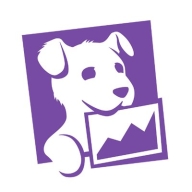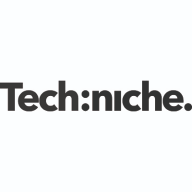

Datadog and Statseeker compete in the network monitoring category. Datadog has the upper hand in pricing and support, while Statseeker offers superior features that justify its cost.
Features: Datadog is known for its robust integration capabilities, real-time analytics, and advanced reporting tools. Statseeker excels in network performance monitoring, offering detailed network analytics and efficient resource utilization. The primary distinction is Datadog’s focus on a broader application monitoring scope versus Statseeker's specialization in network performance insights.
Room for Improvement: Datadog could enhance its setup costs and streamline its wide range of features, which might seem overwhelming. Statseeker should consider expanding its features to accommodate broader application monitoring and improve its cloud-based deployment options. Improving integration flexibility and reporting customization can further enhance both products.
Ease of Deployment and Customer Service: Datadog offers a cloud-based deployment model adaptable to diverse organizational needs with noted responsive customer service. Conversely, Statseeker’s on-premise deployment focuses on streamlined installation with specialized technical support. The key difference stands in Datadog’s flexible cloud model versus Statseeker’s tailored on-premise offerings.
Pricing and ROI: Datadog's upfront costs can be higher but offer justified ROI due to comprehensive monitoring solutions and analytical capabilities. Statseeker provides a cost-effective setup focusing on long-term savings through efficient network monitoring. The main distinction is Datadog’s extensive capabilities leading to higher costs but significant ROI versus Statseeker’s cost-conscious focus on network performance benefits.
| Product | Market Share (%) |
|---|---|
| Datadog | 3.1% |
| Statseeker | 0.3% |
| Other | 96.6% |

| Company Size | Count |
|---|---|
| Small Business | 78 |
| Midsize Enterprise | 42 |
| Large Enterprise | 82 |
| Company Size | Count |
|---|---|
| Small Business | 2 |
| Midsize Enterprise | 6 |
| Large Enterprise | 34 |
Datadog integrates extensive monitoring solutions with features like customizable dashboards and real-time alerting, supporting efficient system management. Its seamless integration capabilities with tools like AWS and Slack make it a critical part of cloud infrastructure monitoring.
Datadog offers centralized logging and monitoring, making troubleshooting fast and efficient. It facilitates performance tracking in cloud environments such as AWS and Azure, utilizing tools like EC2 and APM for service management. Custom metrics and alerts improve the ability to respond to issues swiftly, while real-time tools enhance system responsiveness. However, users express the need for improved query performance, a more intuitive UI, and increased integration capabilities. Concerns about the pricing model's complexity have led to calls for greater transparency and control, and additional advanced customization options are sought. Datadog's implementation requires attention to these aspects, with enhanced documentation and onboarding recommended to reduce the learning curve.
What are Datadog's Key Features?In industries like finance and technology, Datadog is implemented for its monitoring capabilities across cloud architectures. Its ability to aggregate logs and provide a unified view enhances reliability in environments demanding high performance. By leveraging real-time insights and integration with platforms like AWS and Azure, organizations in these sectors efficiently manage their cloud infrastructures, ensuring optimal performance and proactive issue resolution.
We monitor all Network Monitoring Software reviews to prevent fraudulent reviews and keep review quality high. We do not post reviews by company employees or direct competitors. We validate each review for authenticity via cross-reference with LinkedIn, and personal follow-up with the reviewer when necessary.